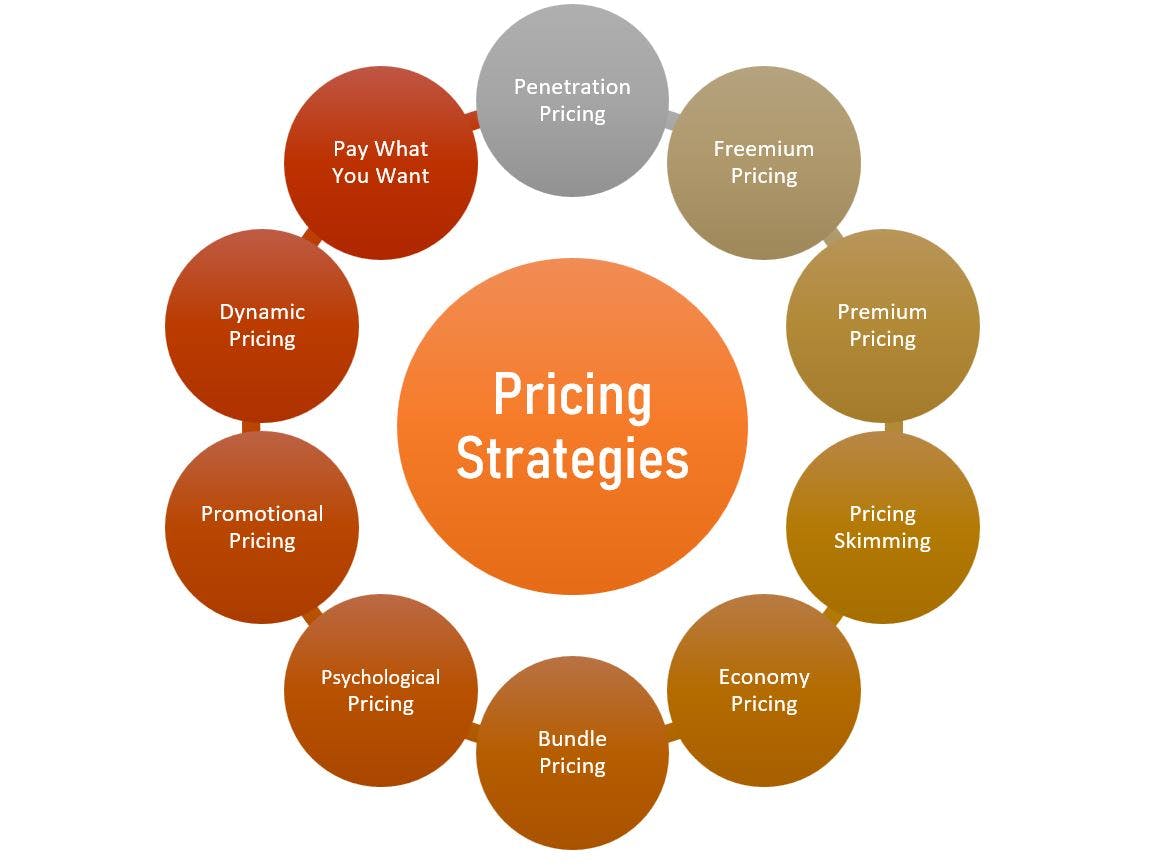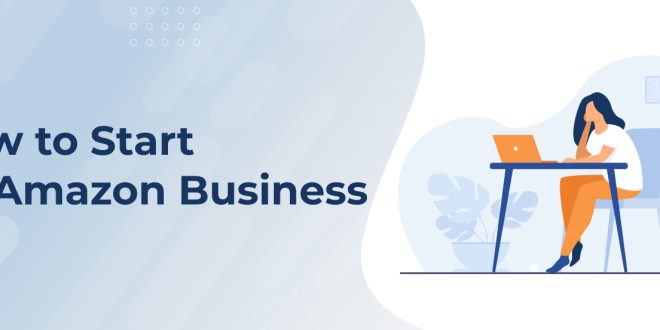In today’s digital age, starting an online business has become an appealing prospect for aspiring entrepreneurs. One platform that offers immense potential for success is Amazon’s business. With its vast customer base and robust infrastructure, Amazon provides an excellent opportunity to establish a profitable online venture. However, navigating the world of Amazon can be daunting for beginners. In this comprehensive guide, we will walk you through the essential steps to start an Amazon business successfully. From product selection to marketing strategies, we will cover it all. So, let’s dive deeper into each step!
-
Research and Identify a Profitable Niche

Before diving into the Amazon marketplace, thorough research is crucial. Start by identifying a profitable niche that aligns with your interests, expertise, and market demand. Look for products that have a consistent demand throughout the year, rather than being limited to seasonal trends. Conduct market research using tools like Jungle Scout, AMZScout, or Helium 10 to evaluate the competition, analyze sales data, and identify products with high demand and reasonable profit margins.
Consider factors such as product category restrictions, competition level, and target audience preferences. Look for untapped niches or areas where you can differentiate your products from the competition. Additionally, consider your knowledge and passion for the niche, as it will keep you motivated throughout the journey.
-
Choose the Right Selling Plan

Amazon offers two primary selling plans: Individual and Professional. The Individual plan is suitable for beginners and sellers with low sales volume. It has no monthly subscription fee but charges a per-item fee for each sale. This plan is ideal if you’re just starting and want to test the waters or sell a limited number of products. However, keep in mind that the per-item fees can add up if you plan to sell a large volume.
On the other hand, the Professional plan requires a monthly subscription fee but offers various advantages. It provides access to advanced selling tools, bulk listing options, and advertising features like Sponsored Products and Brands. The Professional plan is recommended if you plan to scale your business and have more control over your listings and promotions. Assess your business requirements, projected sales volume, and budget to choose the plan that suits your needs.
-
Set Up Your Amazon business Seller Account

To start selling on Amazon, you need to create an Amazon Seller Account. The process is straightforward and involves providing necessary information such as your business details, contact information, strategies, and payment preferences. Ensure that you have all the required documents ready, including your business license, tax information, and bank account details.
There are two types of Amazon Seller Accounts: Individual and Professional. Sign up for the appropriate account type based on your chosen selling plan. Follow the step-by-step instructions provided by Amazon to create your seller account and complete the registration process. Once your account is approved, you can start listing your products on the Amazon marketplace.
-
Source Products for Your Amazon business
Once your seller account is set up, it’s time to source products for your Amazon business. There are several options available for product sourcing:
a. Manufacturing your products: This option gives you full control over the product quality, branding, and profit margins. However, it requires more upfront investment and involves aspects such as product design, manufacturing, and packaging. Research manufacturing processes, find reliable suppliers or manufacturers, and ensure the products meet the required standards and regulations.
b. Wholesaling from suppliers: Wholesaling involves purchasing products in bulk from suppliers at wholesale prices and reselling them on Amazon. Look for reputable suppliers or distributors who offer quality products at competitive prices. Attend trade shows, contact manufacturers directly, or leverage online platforms like Alibaba to find suitable suppliers. Consider factors such as product quality, reliability, shipping times, and minimum order quantities when choosing suppliers.
c. Leveraging Fulfillment by Amazon (FBA): With FBA, you can send your inventory directly to Amazon’s fulfillment centers, and they handle the storage, packaging, and shipping of your products. This option simplifies the logistics process and provides access to Amazon Prime customers. Research the FBA fees, understand the storage requirements, and prepare your inventory according to Amazon’s guidelines.
Evaluate the pros and cons of each sourcing method and choose the one that aligns with your business goals, budget, and operational capabilities.
-
Optimize Product Listings for Maximum Visibility
To stand out from the competition and attract potential customers, optimizing your product listings for maximum visibility is essential. Effective optimization involves the following elements:
a. Product Title: Create a clear and concise title that includes relevant keywords and highlights your product’s key features and benefits. Follow Amazon’s guidelines regarding title length and formatting.
b. Product Images: Invest in professional product photography or create high-quality images that showcase your product from different angles. Ensure that your images are visually appealing, well-lit, and accurately represent your product. Comply with Amazon’s image guidelines regarding size, format, and content.
c. Product Descriptions: Craft compelling and informative descriptions that clearly explain your product’s features, specifications, and benefits. Use bullet points and concise paragraphs to improve readability. Incorporate relevant keywords naturally throughout the description.
d. Backend Keywords: Use backend keywords to improve the discoverability of your products. These keywords are not visible to customers but play a crucial role in Amazon’s search algorithm. Include relevant keywords that customers might use when searching for products like yours.
e. Product Reviews: Encourage customers to leave reviews by providing excellent customer service and following up with buyers after their purchase. Positive reviews can significantly impact your product’s ranking and credibility.
Continuously monitor your product listings and make adjustments based on customer feedback, sales performance, and changes in the market landscape.
-
Implement Effective Amazon business Pricing Strategies

Pricing plays a vital role in the success of your Amazon business. While you want to remain competitive, it’s important to ensure that your prices provide a reasonable profit margin. Consider the following strategies:
a. Competitive Pricing: Study the prices of your competitors selling similar products. Set your prices accordingly to attract customers while still maintaining a reasonable profit margin. Keep in mind factors such as product quality, unique features, and customer service when determining your pricing strategy.
b. Dynamic Pricing: Utilize dynamic pricing tools or software that monitor market conditions, competition, and demand. These tools can automatically adjust your prices based on predefined rules or algorithms. Dynamic pricing allows you to stay competitive in a fast-paced marketplace and maximize profitability.
c. Promotions and Discounts: Run periodic promotions, offer discounts, or bundle products to attract customers and boost sales. Leverage Amazon’s promotional features, such as Lightning Deals or Coupons, to create enticing offers for your products.
Regularly assess the performance of your pricing strategies, monitor market trends, and make adjustments as needed to maintain competitiveness and profitability.
-
Utilize Amazon business Advertising to Drive Traffic
Amazon offers a range of advertising options to help sellers drive traffic and increase product visibility. By utilizing Amazon’s advertising features, you can reach your target audience more effectively. Here are some key advertising options:
a. Sponsored Product Ads: These ads appear within Amazon’s search results and product detail pages. You can target specific keywords or products related to your offerings. Conduct thorough keyword research to identify relevant and high-converting keywords. Monitor the performance of your Sponsored Product Ads and refine your keyword targeting and bids to maximize results.
b. Sponsored Brand Ads: Formerly known as Headline Search Ads, Sponsored Brand Ads allow you to showcase your brand and multiple products. These ads appear at the top of search results, providing visibility and brand recognition. Create compelling ad copy, include eye-catching images, and drive traffic to your brand’s storefront or specific product pages.
c. Display Ads: Display Ads are banner ads that appear on Amazon and its partner websites. They can help increase brand exposure and drive traffic to your product listings. However, Display Ads require a minimum budget and are typically more suitable for established sellers with larger advertising budgets.
d. Video Ads: Amazon also offers Video Ads, allowing you to engage customers with visually appealing videos. These ads can be an effective way to showcase product features or demonstrate product usage.
Create well-targeted ad campaigns, set a budget, and optimize your ads based on performance metrics such as click-through rates (CTR), conversion rates, and return on ad spend (ROAS). Continuously monitor and analyze the performance of your campaigns to refine your advertising strategy and allocate your budget effectively.
-
Provide Exceptional Customer Service

Exceptional customer service is crucial for the long-term success of Amazon’s business. Aim to provide outstanding customer service by promptly addressing customer inquiries, concerns, and returns. Be responsive, professional, and helpful in your communications with customers.
Respond to customer inquiries and messages promptly, ideally within 24 hours. Be proactive in resolving any issues or concerns raised by customers. Take customer feedback seriously and continuously work to improve your products and services.
Encourage customers to leave reviews by providing a great buying experience and following up with post-purchase emails. Positive reviews and high customer ratings can significantly impact your product rankings and sales performance.
Conclusion
Starting an Amazon business requires careful planning, research, and strategic implementation. By conducting thorough research, selecting the right products, optimizing your listings, and leveraging Amazon’s advertising tools, you can build a successful online business. Remember to stay updated with the latest market trends, monitor your competitors, and consistently seek ways to improve your business.
Success on Amazon requires continuous effort, adaptability, and a customer-centric approach. Focus on providing exceptional customer service, refining your pricing strategies, and optimizing your product listings to stand out from the competition.
With determination, perseverance, and a well-executed business strategy, you can thrive in the dynamic world of Amazon entrepreneurship. Good luck on your journey
 Posting Point
Posting Point

